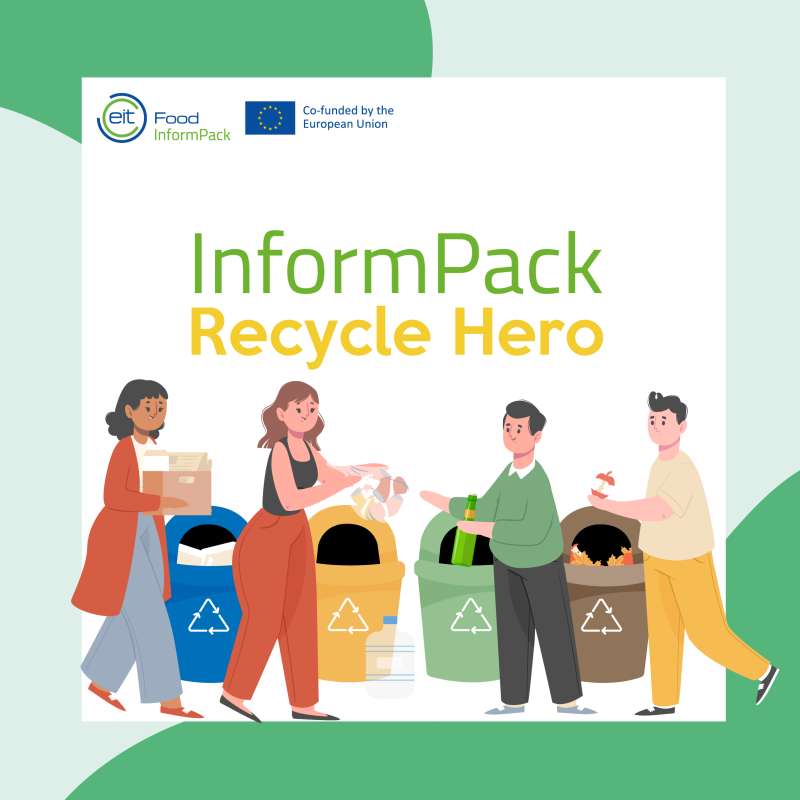
Hello,
Thank you for taking part in Recycle Hero quiz powered by EIT Food InformPack!
In this activity, you will check how much you know about the recycling of food packaging. We would also like to ask you some general questions about your recycling behaviour and background information.
The quiz will take you around 7 minutes and your answers will be treated confidentially.
Let’s start!
By clicking "START", I consent to take part in this quiz and I am aware that:
1. My participation is voluntary.
2. No personally identifiable information will be requested from me such as name, ID, or other contact details.
3. The raw data on which the results of the study are based will be retained in secure cloud storage.
4. Data from this study may be published.